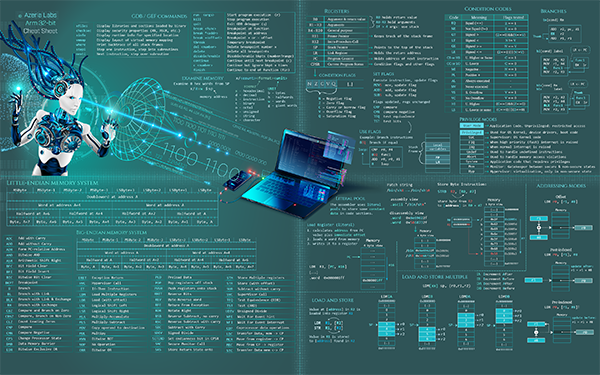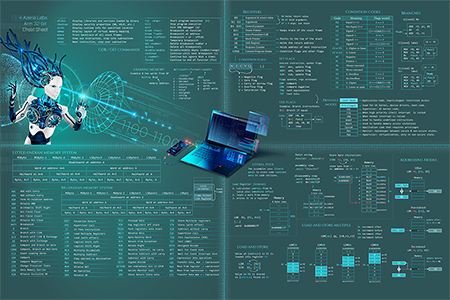This ARM assembly basics cheatsheet covers registers, instructions, branching, and conditional execution. You can use it as a guideline if you’re starting out with ARM assembly and need a little refresher of the basics.
Version 1.2 (January 2017, fixed typo in SP register): 1920×1080



